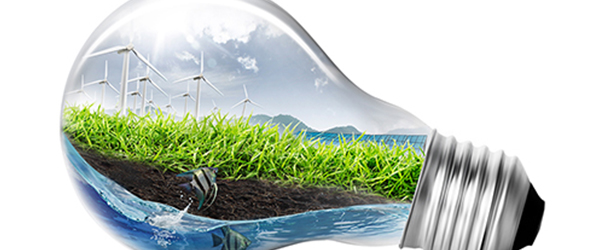How can I ‘go green’ without going off the grid?

As science continues to present convincing evidence that human life significantly affects the health and sustainability of the Earth we live on, countless business, cities, and even entire countries around the world have brought new life to green, or renewable, energy. Often we picture going ‘green’ as taking measures to go off-grid or cut all of our usage so that we are living on the bare minimum. While we are fans of keeping life simple - there is a solution that might help you ‘go green’ while still maintaining your current lifestyle.
What exactly is green energy?
Going back to the basics: Unlike traditional energy, which is generated mostly from fossil fuels and often requires intensive extraction practices, like drilling and mining, green energy comes from sources that replenish themselves naturally and won’t run out. There are four main types of renewable energy in the market today:
- Solar: made from cells that convert sunlight to electricity without any moving parts. This conversion is made possible through special properties of semi-conducting materials used to make solar panels.
- Biomass: produced when organic wastes decay. Biomass can come from things like wood, garbage, crops, or landfill gas. The process to use biomass energy is a bit complex. First, biomass fuels are burned to heat a boiler filled with water from a lake, river, or pond. The water is then turned to steam, which is used to turn a turbine generator and produce electricity.
- Hydropower: uses water flow to power a turbine. One of the oldest forms of energy generation, the amount of energy generated is determined by the speed the water flows.
- Wind: produced by a wind turbine that rotates two or three propeller-like blades around a rotor. The turbine is connected to a generator and creates electricity when it spins. Because there are mostly flat and open spaces, many windfarms are found in the Midwest and Texas, but can also be found offshore.
These all sound kind of complicated. How can I work green energy into my lifestyle?
If you’re not ready to invest a significant sum of money in new energy equipment, you’re not alone. But don’t worry, there are plenty of options for you to consider that won’t break the bank and won’t take much extra effort on your end. Many energy companies, including IGS, offer a green electricity rate. When you sign up for a green rate, the company purchases your electricity from a renewable source – like solar – equal to 100% of the energy you use. That renewable energy is then delivered to the electric grid. You won’t see or feel a single difference in how your electricity operates at home, but by purchasing a green electricity rate, you can feel good about contributing toward reducing the amount of energy generated from non-renewable fossil fuel sources.
Easy enough. Why WOULDN’T I do this?
There really isn’t a reason not to! Though green energy rates are traditionally a bit higher than “brown” rates (energy generated from conventional, often non-renewable, sources), the price difference isn’t too significant. You won’t see much of a difference month-to-month, but may notice a slight uptick in cost when you add up your yearly spend. However, if you lock in a low fixed rate, you’ll have just the predictability you need to make a green rate work for your budget.
The future of energy is green.
Many future-focused energy reports predict that the green energy industry will reach its tipping point within the next decade, as costs in solar power and wind power rival those in the natural gas and oil industries. Companies around the world continue to race to develop the most affordable means for green energy distribution. Choosing to invest in a green energy plan is a simple and cost-effective way to be an engaged energy consumer.